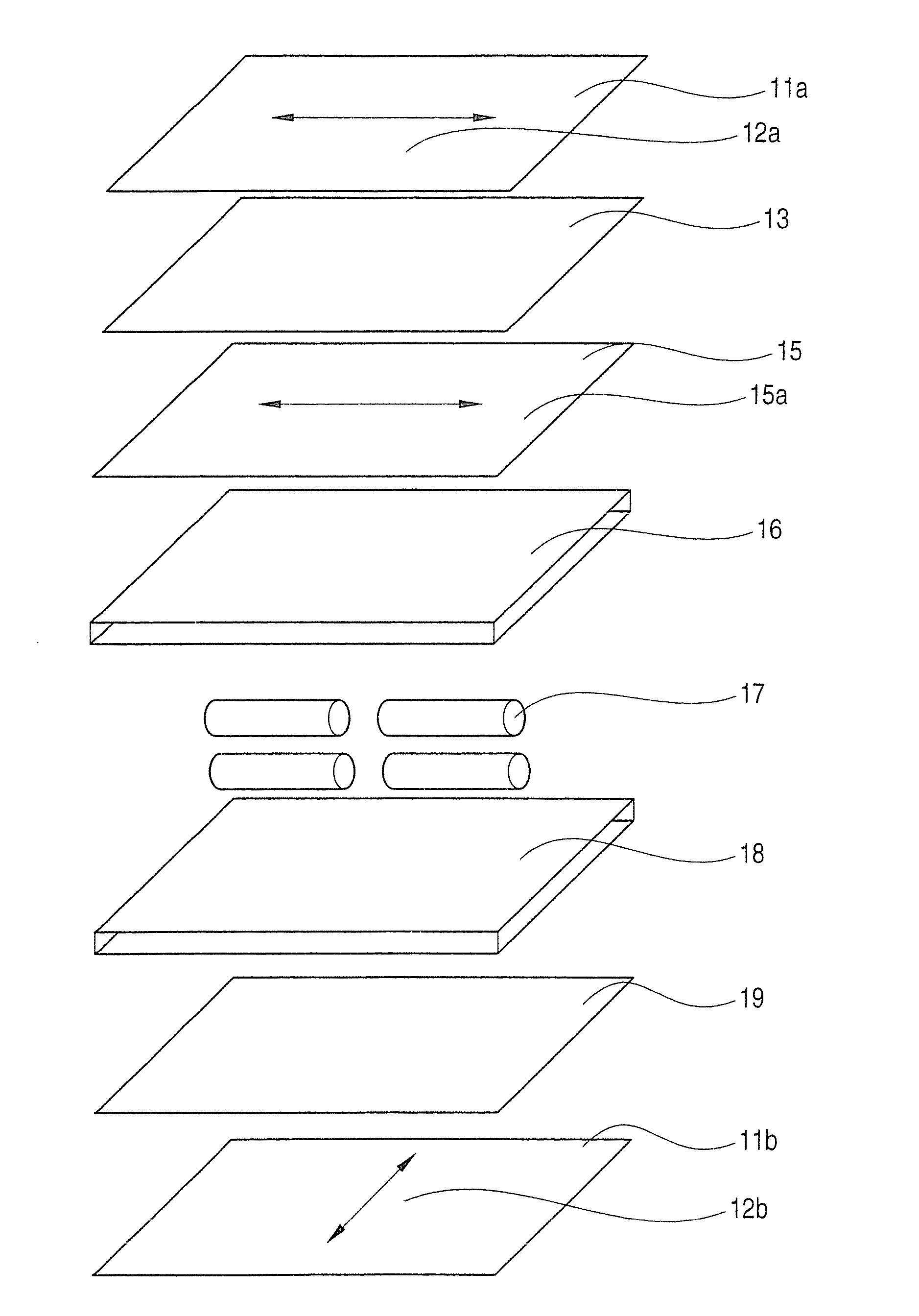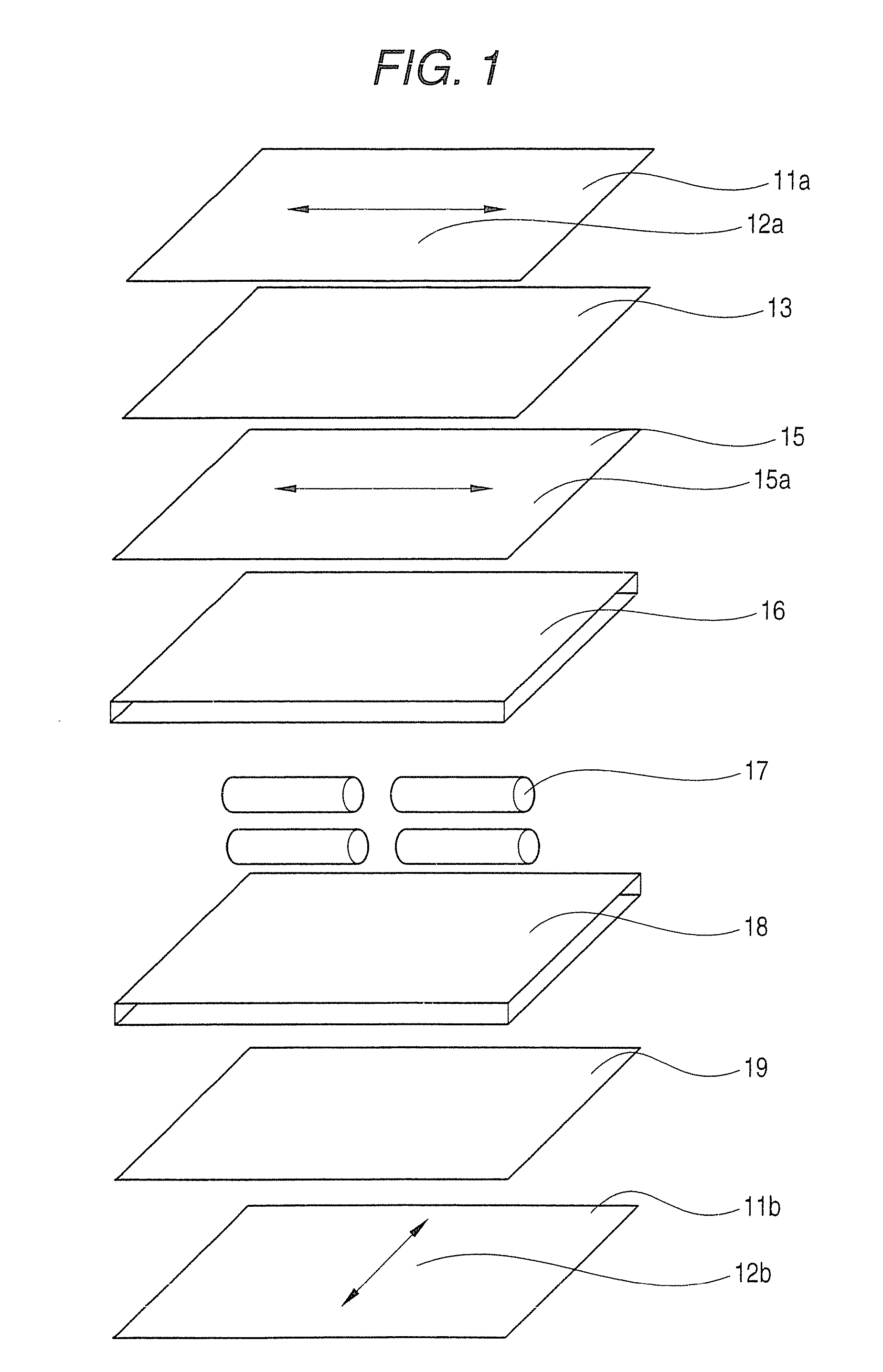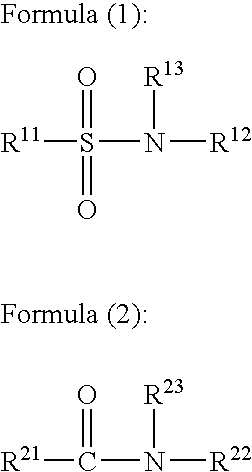Cellulose acylate film, optically compensatory film, polarizing plate and liquid crystal display
a technology of cellulose acylate and cellulose acylate, which is applied in the direction of polarising elements, spectral modifiers, synthetic resin layered products, etc., can solve the problems of uneven optical characteristics in the entire film face, inability to directly stack hydrophilic pva, and suffer from optically transparent films, etc., to improve the modulus of elasticity and vapor transmission rate and reduce re and rth, improve physical properties, and improve the effect of film
- Summary
- Abstract
- Description
- Claims
- Application Information
AI Technical Summary
Benefits of technology
Problems solved by technology
Method used
Image
Examples
example 1-1
Preparation of Cellulose Acetate Solution A (CAL-1)
[0177]The composition as will be shown below was fed into a mixing tank and stirred under heating to thereby dissolving individual components, thus giving a cellulose acetate solution A. As the cellulose acylate, use was made of one having an acylation ratio (Ac:OH=2.98:0.02, wherein Ac indicates acetyl substituent; OH indicates unsubstituted hydroxyl group; and the ratio means the acylation ratio).
{Composition of Cellulose Acetate Solution A (CAL-1)}
[0178]
Cellulose acetate (acylation ratio 100 parts by mass (weight)Ac = 2.98)Methylene chloride (first solvent)402.0 parts by massMethanol (second solvent) 60.0 parts by mass
(Preparation of Mat Agent Solution (ML-1))
[0179]20 parts by mass of silica particles having a mean particle size of 16 nm (AEROSIL R972 by Nippon Aerosil) and 80 parts by mass of methanol were well stirred and mixed for 30 minutes to prepare a dispersion of silica particles. The dispersion was put into a disperser ...
example 1-2
Preparation of Additive Solution (AD-2)
[0184]The procedure of preparing the additive solution (AD-1) was followed but using an Rth-lowering agent (265) as a substitute for the Rth-lowering agent (119) to give an additive solution (AD-2).
(Production of Cellulose Acylate Film (101))
[0185]The procedure of preparing the cellulose acylate film (101) was followed but using the additive solution (AD-2) as a substitute for the additive solution (AD-1) to give a cellulose acylate film (102). The remaining solvent content of the thus-produced cellulose acylate film was less than 0.1% by mass, and the thickness of the film was 80 μm.
example 1-3
Production of Cellulose Acylate Film (103)
[0186]The procedure of preparing the cellulose acylate film (102) was followed but stripping off the film having a remaining solvent content of 30% by mass from the band to give a cellulose acylate film (103). The remaining solvent content of the thus-produced cellose acylate film was less than 001% by mass, and the thickness of the film was 80 μm.
PUM
| Property | Measurement | Unit |
|---|---|---|
| glass transition temperature | aaaaa | aaaaa |
| coefficient of humidity | aaaaa | aaaaa |
| thickness | aaaaa | aaaaa |
Abstract
Description
Claims
Application Information
 Login to View More
Login to View More - R&D
- Intellectual Property
- Life Sciences
- Materials
- Tech Scout
- Unparalleled Data Quality
- Higher Quality Content
- 60% Fewer Hallucinations
Browse by: Latest US Patents, China's latest patents, Technical Efficacy Thesaurus, Application Domain, Technology Topic, Popular Technical Reports.
© 2025 PatSnap. All rights reserved.Legal|Privacy policy|Modern Slavery Act Transparency Statement|Sitemap|About US| Contact US: help@patsnap.com



